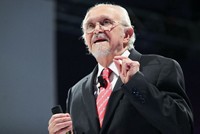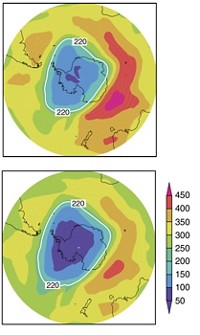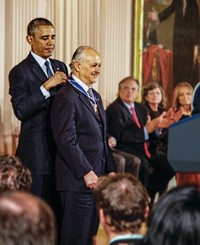Advertisement
Grab your lab coat. Let's get started
Welcome!
Welcome!
Create an account below to get 6 C&EN articles per month, receive newsletters and more - all free.
It seems this is your first time logging in online. Please enter the following information to continue.
As an ACS member you automatically get access to this site. All we need is few more details to create your reading experience.
Not you? Sign in with a different account.
Not you? Sign in with a different account.
ERROR 1
ERROR 1
ERROR 2
ERROR 2
ERROR 2
ERROR 2
ERROR 2
Password and Confirm password must match.
If you have an ACS member number, please enter it here so we can link this account to your membership. (optional)
ERROR 2
ACS values your privacy. By submitting your information, you are gaining access to C&EN and subscribing to our weekly newsletter. We use the information you provide to make your reading experience better, and we will never sell your data to third party members.
ACS News
Chemistry Nobelist Mario Molina dies
His work on ozone layer depletion led to development of an international environmental treaty
by Cheryl Hogue
October 9, 2020

Mario Molina, who shared the 1995 Nobel Prize in Chemistry for work on understanding the formation and decomposition of ozone in the stratosphere, died Oct. 7 at his home in Mexico City. He was 77.
“Arguably, I think his work saved humans,” says Renyi Zhang , an atmospheric sciences professor at Texas A&M University. Zhang was Molina’s first doctoral student when the Nobelist was a professor at the Massachusetts Institute of Technology.
In 1974, Molina was a post-doc under the late F. Sherwood Rowland at the University of California, Irvine, when the two published a ground-breaking paper in Nature (DOI: doi.org/10.1038/249810a0). They hypothesized that chlorofluorocarbons (CFCs), synthetic gases then widely used as refrigerants and aerosol propellants, could deplete stratospheric ozone, which absorbs most of the sun’s UV light and makes life on Earth possible.
Chemical manufacturers and aerosol producers scoffed at the idea. But other scientists confirmed and built on Molina and Rowland’s work.
After researchers discovered the formation of a seasonal “hole” in the ozone layer over the Antarctic, countries agreed to an international phaseout of CFCs and other ozone-depleting chemicals under a landmark 1987 environmental treaty, the Montreal Protocol on Substances that Deplete the Ozone Layer.
Molina shared the Nobel Prize with Rowland and Dutch atmospheric chemist Paul J. Crutzen. Molina also received the US Presidential Medal of Freedom in 2013.
As a boy, Molina showed interest in science and set up a laboratory in a bathroom in his family’s home. He received a bachelor’s degree in chemical engineering at the National Autonomous University of Mexico, then earned a doctorate in physical chemistry at the University of California, Berkeley, in 1972. After working at the Jet Propulsion Laboratory of the California Institute of Technology for 7 years, he was a professor at MIT from 1989 until 2004.
More recently, he split his time between the Mario Molina Center for Strategic Studies on Energy and the Environment in Mexico City and the University of California, San Diego, where he was a professor.
Molina was active in environmental policy, urging world leaders to address climate change and working to establish polices to improve air quality in Mexico City, says his UCSD colleague Kimberly Prather, an atmospheric chemistry professor. “He was committed to making a difference for our planet,” she says.
When the COVID-19 pandemic emerged earlier this year, Molina studied the transmission of SARS-CoV-2, the virus that causes the disease, Zhang says. Molina joined Zhang and others as a co-author on two papers published recently that conclude wearing face coverings can stem the spread of COVID-19.





Join the conversation
Contact the reporter
Submit a Letter to the Editor for publication
Engage with us on Twitter